






| Martinique Anole (Dactyloa roquet (Bonnaterre, 1789)) |







|
|
Scientific name: Dactyloa roquet (Bonnaterre, 1789) Common name: Martinique Anole Other names: Martinique's anole, Savannah Anole. Old scientific name: Anolis roquet. French name: Anolis de la Martinique, Zandoli. Order: Squamata Suborder: Sauria Family: Dactyloidae Size: Up to 20 cm for males and 16 cm for females. Habitat : Trunks and rocks, low growing vegetation but also gardens and houses. Food: Small insects and spiders. Reproduction : Oviparous. Females lay their eggs in the ground. Geographic area: Initially endemic to Martinique, this small lizard was introduced to other islands in the Lesser Antilles. |
Anoles are diurnal lizards, excellent climbers, with an elongated head, a pointed snout and prominent eyes. Males have a large, colourful gular dewlap, it is bright lemon yellow on the Martinique Anole. The Martinique Anole has a body colour and colourful patterns that vary greatly depending on the subspecies. There are six subspecies in Martinique with their own distribution area for each of them. Dactyloa roquet roquet found in the south and centre of Martinique is generally green with spots or stripes on females. Dactyloa roquet caracoli found at the eastern end of the Caravelle peninsula is generally brown. Males have a more marbled pattern and females have dorsal stripes. Dactyloa roquet majolgris found on the northeast coast of Martinique is darker in colour, olive to brown. Males have small, scattered spotted patterns and may have white spots around their heads. Females have dorsal stripes like other subspecies. Dactyloa roquet summus found in the mountainous areas of northern Martinique is bright green in colour. Males have a spotted pattern on their back and a mottled pattern on their sides. Females have dorsal chevrons and light mottled patterns on the sides. Dactyloa roquet zebrilus found in the centre of the west coast of Martinique, south of Saint-Pierre, is beige to brown in colour. Males are striped and the origin of the subspecies name. Females are duller and less clearly striped. Dactyloa roquet salinei which is found in the extreme south-east of Martinique and neighbouring islets and is olive, yellow-green or brown in colour. Males have black stripes on their backs and spots on their heads. Females have dark mottled patterns. |
| [To know more about the Martinique Anole] [Next picture] [Top] |
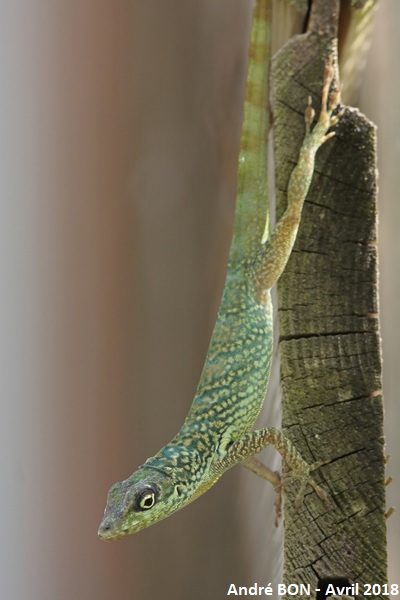
|
This male Anole was observed at Le Diamant. I think that the location of the observation and the general colour are enough to identify it as the main subspecies roquet. |
| [To know more about the Martinique Anole] [Next picture] [Previous picture] [Top] |
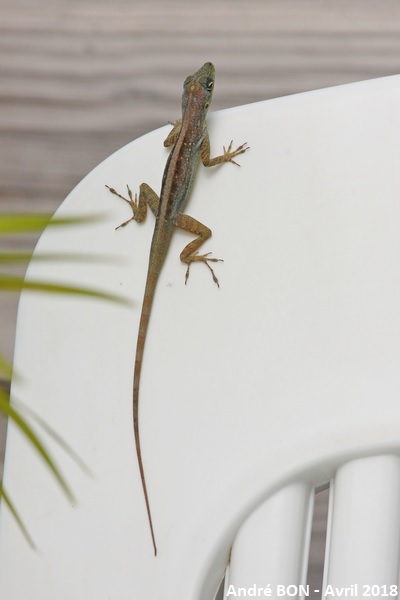
|
This other specimen which shows us its ability to climb vertical objects must be a female given its pattern which is more striped than spotted. |
| [To know more about the Martinique Anole] [Next picture] [Previous picture] [Top] |
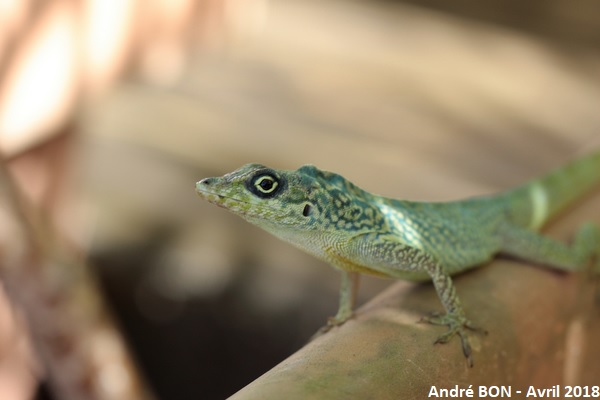
|
Close-up of the male's head. |
| [To know more about the Martinique Anole] [Next picture] [Previous picture] [Top] |
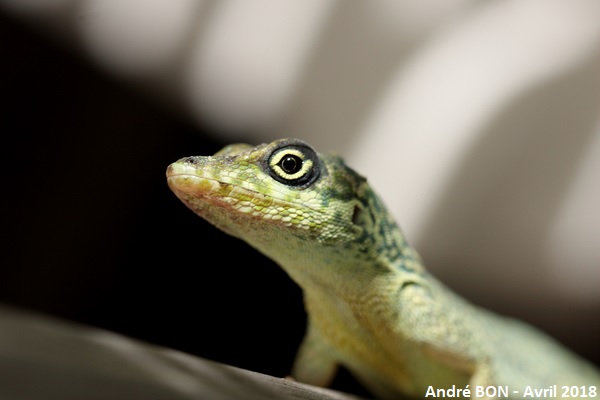
|
These Anoles, accustomed to gardens, are not very shy. Who is watching who? |
| [To know more about the Martinique Anole] [Next picture] [Previous picture] [Top] |
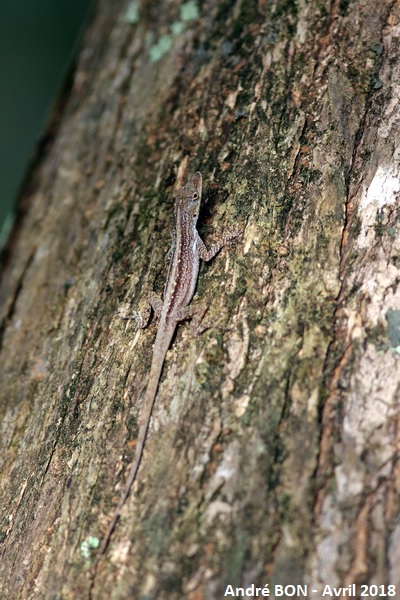
|
I think that this female, observed in Saint-Anne, at Anse Caritan, is of the salinei subspecies. Its brown colour provides effective camouflage on trunks. |
| [To know more about the Martinique Anole] [Next picture] [Previous picture] [Top] |
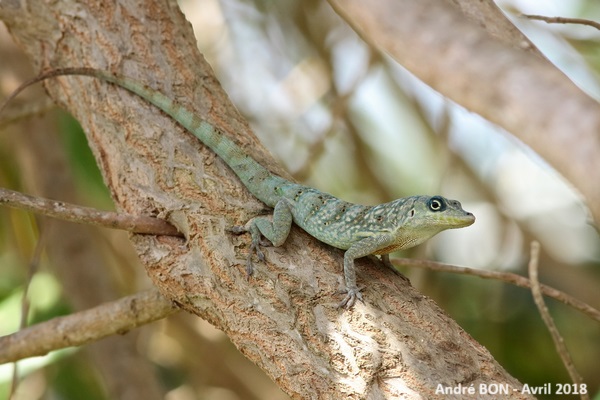
|
Sightings are numerous but I did not have the opportunity to see the yellow gular dewlap deployed. |
| [To know more about the Martinique Anole] [Previous picture] [Top] |
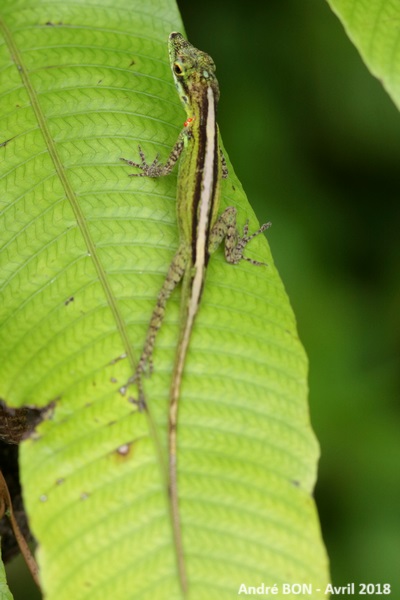
|
I observed this Anole at the start of the Trace des Jésuites trail. The location of the observation and the rather bright green colour made me classify it in the summus subspecies. I think the dorsal stripe indicates a female. |